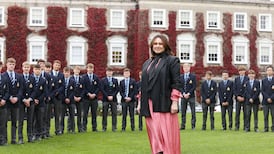Sometimes, when I find myself in select company, I like to announce that I come from the Garvaghy Road. In the gap this creates in the conversation, I add that Drumcree churchyard is my family burying ground.
These two simple statements have immediate, but widely differing effects. Some people are clearly nervous, wondering what is coming next. Others show signs of sympathetic understanding, others curiosity. Many think it is a joke and laugh heartily. Never did I believe, when I spent my youth rambling about that long and straight thoroughfare, that one day it would be recognised by name over most of the world - certainly not known in the context of dispute and violence.
When I grew up on the Garvaghy Road it was where the town of Portadown ended and the country started. The hedgerows and fields began at the edge of Woodside Hill, one of only two post-war housing estates on the road, the other being Woodside Green, where I lived. Beyond that, on the way to Drumcree Parish Church, and on both sides of the road, were the rose gardens of the McGredy family, breeders and hybridisers of roses for generations, and still at it in New Zealand to this day.
Fresh, open air
To be on the Garvaghy Road beyond the Woodside estates was to be in the country, away from traffic, away from factories, to be in the fresh open air. This was one of the reasons why the walk from Portadown to Drumcree was so popular. It left the narrow streets, small parlour houses and the smell of bleach from the linen factories of the town behind. It was also the opportunity for townspeople to visit the graves of their departed friends and relatives.
With fewer cars about then, the roads from the town to Drumcree on summer evenings and all day Sundays were thronged with people, and if walking is as beneficial as we are told today then they must have been very healthy people, for the journey would have been made several times in one week. Walking to Drumcree was a pastime then.
And it was worth going to. The church and its graveyard are straight out of Gray's Elegy. It had a sense of peace and serenity, sitting high above the town, its churchyard sloping down to little fields and the silver ribbon of the River Bann in the distance. It was rural the way there is no rural today, and many, many summer nights my friends and I sat on the churchyard wall and listened to corncrakes all around and to the drumming of snipe high in the sky.
Portadown to Drumcree and back could be made into a round trip, one way out by Garvaghy Road and back by Corcrain Road, or the other way round. It can still be a round trip today, but which way out and which way in is the problem.
Local authority housing
The Garvaghy Road changed when they began to build local authority housing in the 1950s. Sam McGredy, the last of the family of rosegrowers, upped and away to New Zealand, and the vast tracts of land became available for housing. It was probably meant to be mixed housing, but a great many of the people who moved there came from Obins Street, a Catholic area in the centre of Portadown and known as the Tunnel. That was little more than a slum, occupied by decent people longing for decent housing.
At the other end of the town, the mainly Protestant Edgarstown area of poor houses in dingy streets gave way to the Redmanville and Brownstown estates, and unintentionally Portadown was successfully partitioned into Orange and Green. Nor could it have been forseen then that when these two sprawling sectors of the town met at the point of a V, Drumcree Church, beautiful and tranquil, would become the scene of so much bitterness 50 years later.
Lost for ever
I still go back occasionally to Garvaghy Road, and have been to funerals at Drumcree, but all that was there before has been lost for ever. When I pass Woodside I remember the nights spent sitting on doorsteps with friends of both religion and talking about what we would like to do when we became adults. We knew what schools we went to, but it didn't bother us. We were friends and that was what counted.
I often wonder where those friends are now. Some may still be there, maybe on the Garvaghy Road protesting, for all I know, or wearing an Orange collar. Others, like myself, may have moved on. Somewhere along the line, along Garvaghy Road, it all went wrong.








